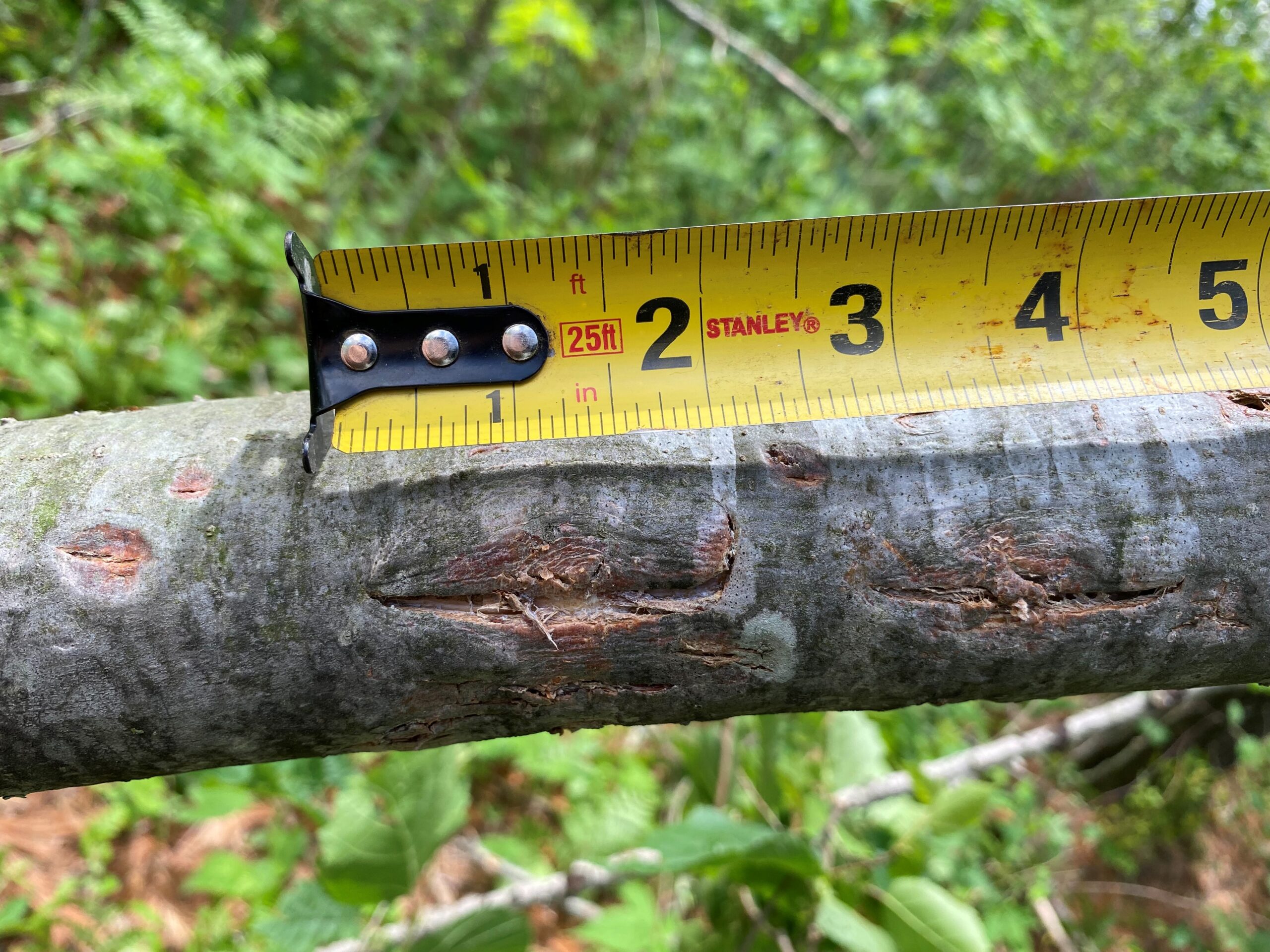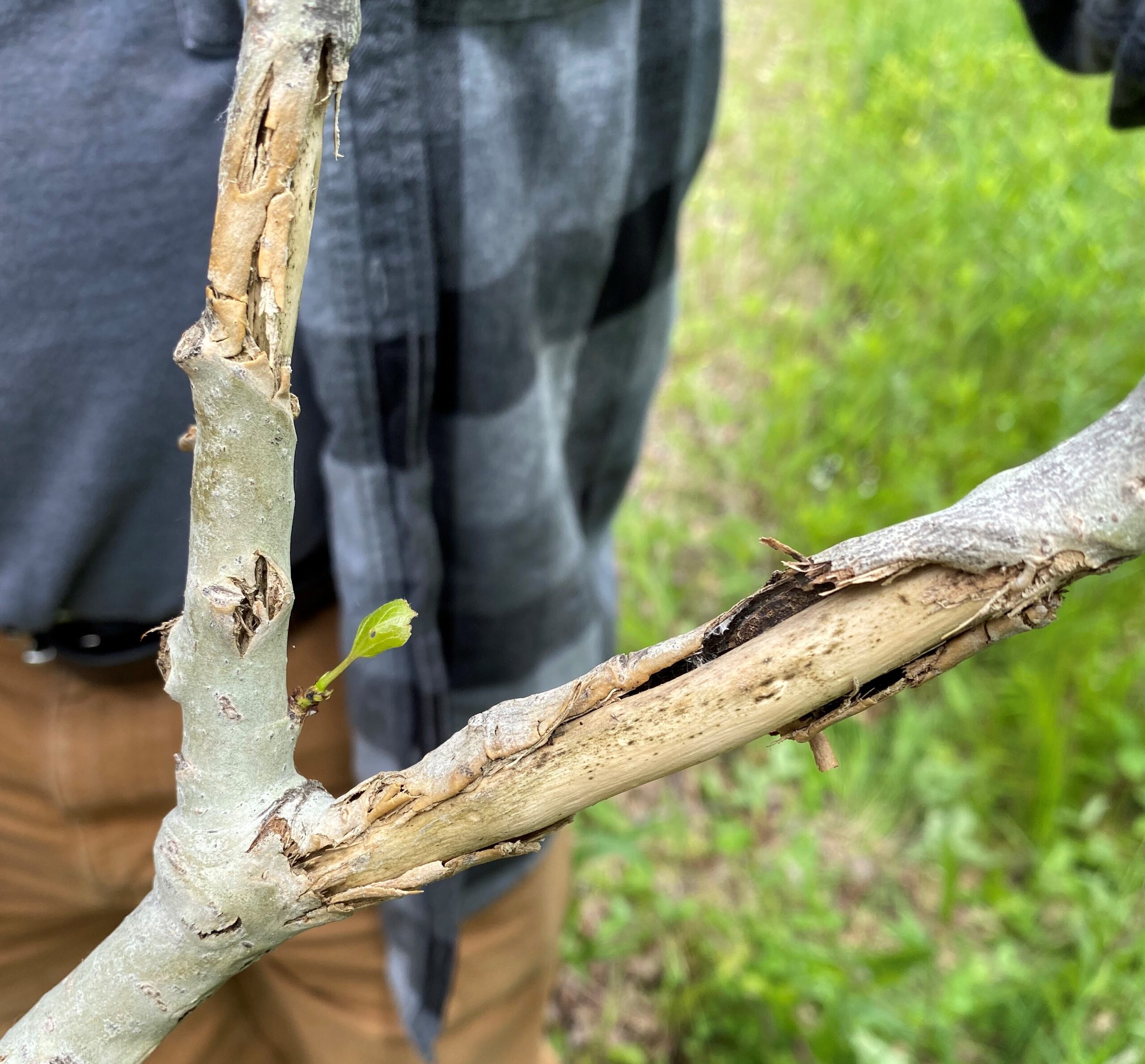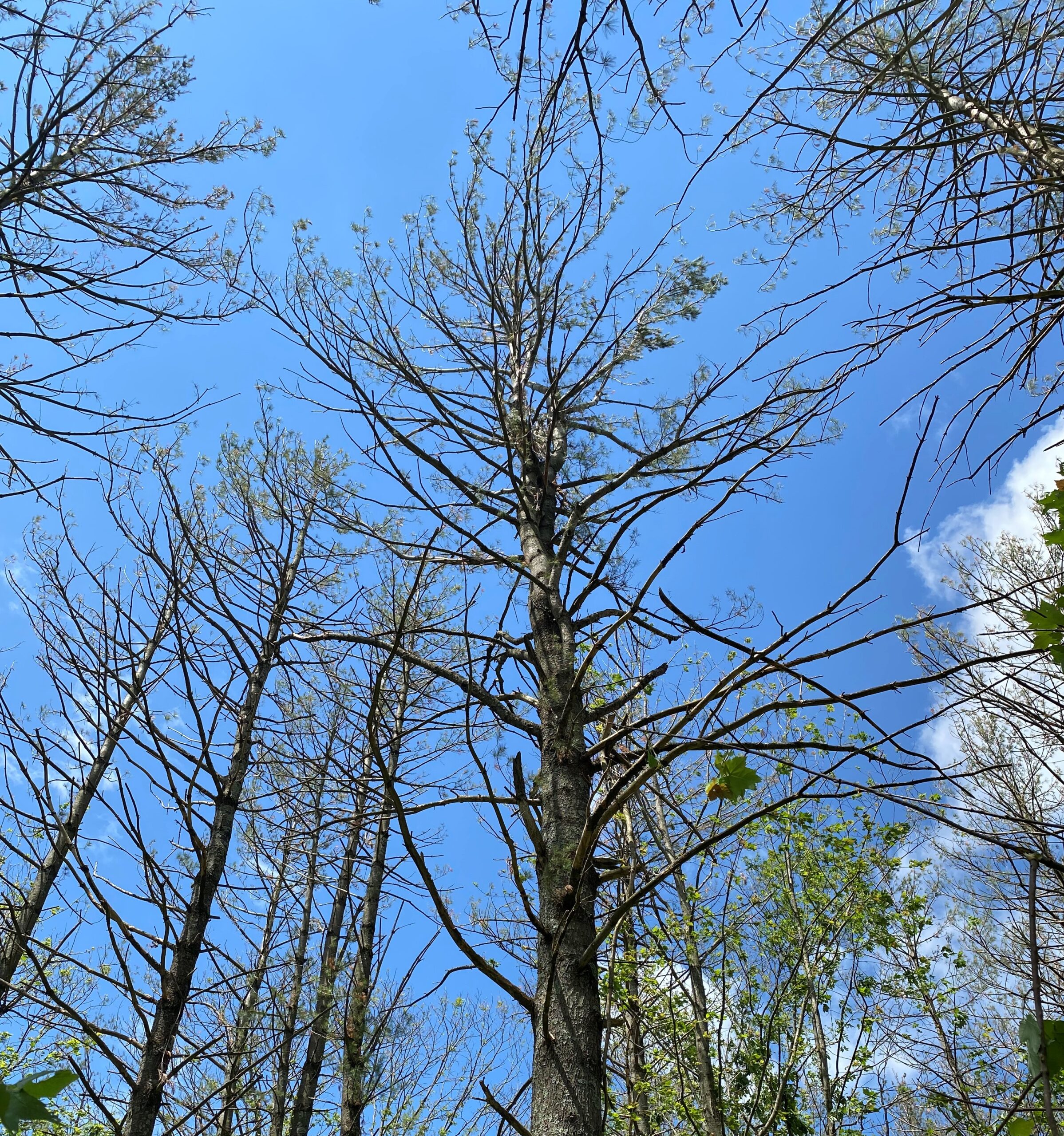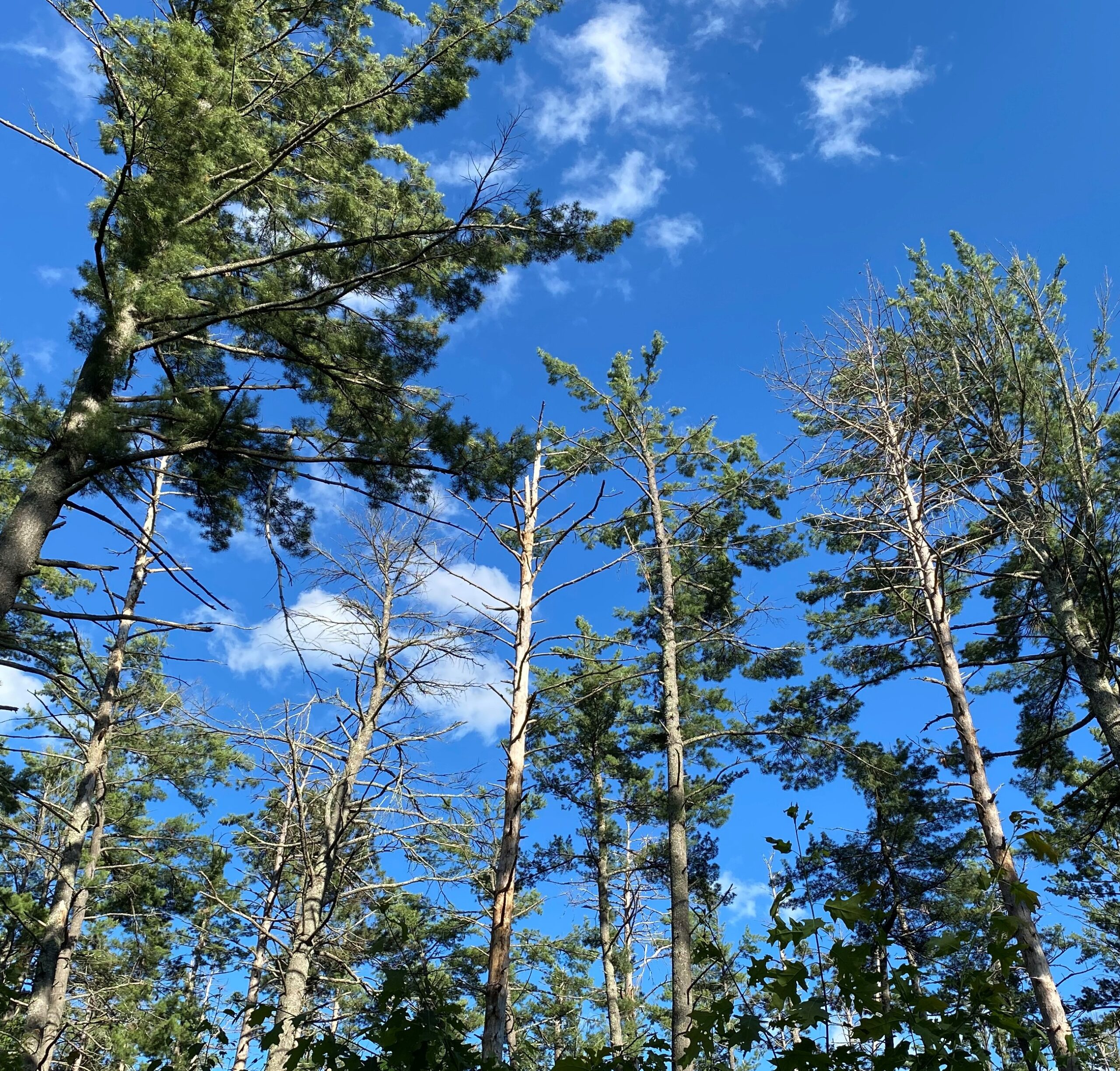By Paul Cigan, DNR Forest Health Specialist, Hayward, Paul.Cigan@wisconsin.gov or 715-416-4920
Conifer and hardwood trees have begun showing more apparent and often substantial signs and symptoms of damage from a severe hailstorm that spread across several northwestern Wisconsin counties on May 9, 2022.
The storm produced golf ball-size hailstones and high-speed winds causing catastrophic injury to tree branches and stems, in addition to defoliation. Few tree species were spared in its path. The heaviest impact occurred in northeastern Polk County, where defoliation of aspen and black locust reached nearly 100%, and pine exceeded 90% (Fig. 1). Red and white oaks show more moderate damage.
Hailstones battered trees at high speeds creating large wounds, including bruising and open bark tears. The current absence of foliage may be the result of expanding leaves getting cleared off during the storm. Another cause may be failure of leaf expansion due to significant injury of leaf buds, girdling and severe water loss from wounded stems. These wounds range from 1/2 inch to over 2 inches in diameter (Fig. 2) and tears that nearly encircle smaller branches (Fig. 3).

Figure 2. Golfball-sized hailstones propelled by gale-force winds battered tree branches like this white pine, tearing open the bark and leaving wounds and bruises over 2 inches wide. Photo: Wisconsin DNR

Figure 3. Loose and tender bark on trees undergoing spring leaf out made them more prone to tearing by the violent onslaught of hailfall. Photo: Wisconsin DNR
The long-term impacts of damage will vary depending on hailfall intensity (which was highest in northeast Polk County), tree species and age, and the growing season conditions as trees recover over the next several years. Aspen and white pine with severe injury (>75% defoliation) (Fig. 4) will likely experience extreme crown dieback and possible mortality in the coming years.

Figure 4. Canopy from the ground illustrates the heavy losses of foliage and branches in some pine forests, which at levels exceeding 50% foliage loss, will disfigure the tree crowns for years and could incite decline and eventual mortality. Photo: Wisconsin DNR
Crowns of older, surviving trees will have a tattered appearance with dead and partially broken limbs for years, as seen this year from the 2014 hailstorm in northern Wisconsin (Fig. 5).

Figure 5. Mature pine forests that have suffered from severe hailstorms display scattered tree and branch mortality, a lasting tattered appearance, and are ultimately more susceptible to future stressors, such as this Sawyer County forest damaged by a severe hailstorm in 2014. Photo: Wisconsin DNR
Abnormally dry summer weather will further stress recovering trees and exacerbate the risk of attack and mortality from secondary pests, including bronze poplar borer (aspen), Ips bark beetles (pine), Diplodia shoot blight (red pine), twolined chestnut borer (oak), locust borer (black locust) and shoestring root rot (all species).
Oak wilt infection risk from beetle-assisted spread was relatively low for this event. Projected beetle emergence occurred two days after the storm for many affected areas, placing injured oaks in an optimistically narrow risk window. However, oaks should still be monitored for symptoms of wilt beginning in July.
Landowners are advised to monitor their trees over the summer and to consider contacting a forester or a certified arborist (if in a yard setting) for management recommendations, such as timber salvage if trees do not re-foliate or if leaves fade to brown or red.

